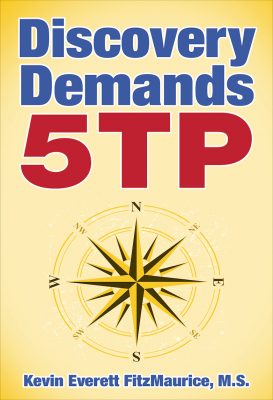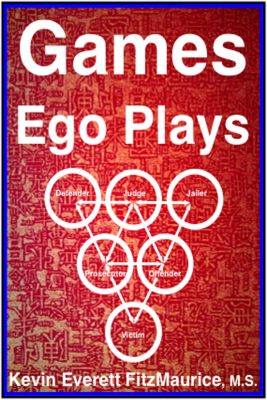ThinkingBig or Small2 RulesRelated Pages6 Groups of Topics9 Skills & Topics
Think Big or Small?
Think big. Yes, but not always. Sometimes, it is best to think small. Learn the difference and how and when to think big.
- We’re All Insane! Second Edition will teach you how to think better and saner.
- Read and discover how to master the life skill of perspective-taking.
Think Big
The Principle of Thinking Big or Small
- You must experiment with, test, and prove this principle for yourself for it to work for you.
- I call the principle, “Know when to think big and when to think small.”
- “Big” and “small” refer to the size and scope of thinking, not the quality of the thinking.
- Whenever you consider any project or assignment, you need to think about it in two different ways.
- We need goals for direction to our destination and steps for how to reach the destination.
1. Think Big
- The first part is the big picture.
- Choose any of the words that you like or that make sense to you from the following list for the big picture: arrival, big picture, complete, comprehend, destination, dream, result, expectation, general idea, goal, reason, the finished product, the forest, the ideal, the whole, understand, vision.
2. Think Small
- The second part is the little picture.
- Choose any of the words that you like or that make sense to you from the following list for the little picture: details, elements, facts, features, incomplete, items, journey, learn, logic, methods, particulars, parts, path, points, procedures, progress, small, specifics, steps, tasks, trees, way, work.
- Read and discover how to master the life skill of perspective-taking.
Think Big
Two Rules
- The principle is to keep these two ways of thinking separate and functioning independently.
- That is, the big picture way of thinking is not to be used for the little picture way of thinking, and the little picture way of thinking is not for the big picture.
Rule One
- Whenever you think of the big picture, only think in big-picture terms and ways.
- Only think big when you are thinking big.
Rule Two
- Whenever you think of the little picture, only think in little picture terms and ways.
- Only think small when you are thinking small.
Understand Teamwork of Big & Small
- This means that when you think of the end of a project or assignment, envision it and think big.
- But when you think about the work of doing a project or assignment, do not envision it, but think small instead.
Think Big
BIG & SMALL WORK TOGETHER
- To create a house, you must think of a completed house.
- But to build a house, you must only think of the tiny steps or tasks you must do each day.
Details
- Work is details, steps, and parts.
- Dreaming is general, holistic, and complete.
Completed in Steps
- No one can think of building a completed house.
- You will choke if you think of the end result as the work.
- It is too big a bite.
- It would help if you worked with manageable small bites.
- I don’t remember you eating all your food at once.
- You only eat a mouthful at a time.
- It is the same with building or working.
- You do not complete anything all at once.
- You complete things one part at a time.
- “Rome was not built in a day.”
- Anytime you think of doing the result, then you will be overwhelmed.
- No one can do the result.
- We can only take small steps on the path to the result.
- Thinking of doing the dream or goal leads to avoidance, escapism, feeling inadequate, feeling overwhelmed, laziness, procrastination, and even feeling crushed by the size and weight of the end goal.
Dream Done
- You do not do the dream.
- You take the steps to the dream.
- “Inch by inch, everything is a cinch.”
- Keep your thinking about the end separate from your thinking about the journey.
- The end and the journey are separate.
- Having a goal to go to New York City is not the same as driving to New York City.
- When you mix these two kinds of thinking, you wind up mixed up.
- Read and discover how to master the life skill of perspective-taking.
Think Big
Related Pages of Free Information
- CBT, CT, & REBT Cognitive Psychotherapies: List Pages
- Coping Skills: Free Help
- Counseling Issues: Free Help
- Ego & Self-Esteem Fast-Facts
- Emotional Responsibility: List Pages
- Exercises & Techniques: List Pages
- Feeling & Coping: Fast-Facts
- Meditation: List Pages
- REBT (Rational Emotive Behavior Therapy): List Pages
- Self-Esteem Issues: List Pages
- Thinking Skills: Free Help
- Unconditional Self-Esteem (USE): Defined
- Read and discover the best diagrams and maps of how people play games with your mind and heart.
- Read and discover how CBT, REBT, & Stoicism evolved into one system: STPHFR.
- Read and discover how to master the life skill of perspective-taking.
Think Big
6 Groups of Topics Menu
- 1. Pages by Topic
- 2. Fast-Facts by Topic
- 3. Quotations by Topic
- 4. Poems by Topic
- 5. Scripture by Topic
- 6. Websites by Topic
- Read and discover how CBT, REBT, & Stoicism evolved into one system: STPHFR.
- Read and discover the world’s best breathing exercise for centering and peace of mind.
- Read and discover how to master the life skill of perspective-taking.
Think Big
9 Skills & Topics Menu
- 1. Anger Skills & Topics
- 2. Blame Skills & Topics
- 3. Communication Skills & Topics
- 4. Coping Skills & Topics
- 5. Counseling Skills & Topics
- 6. Praying Skills & Topics
- 7. Recovery Skills & Topics
- 8. Responsibility Skills & Topics
- 9. Thinking Skills & Topics
- Read and discover how CBT, REBT, & Stoicism evolved into one system: STPHFR.
- Read and discover the world’s best breathing exercise for centering and peace of mind.
- Read and discover how to master the life skill of perspective-taking.




